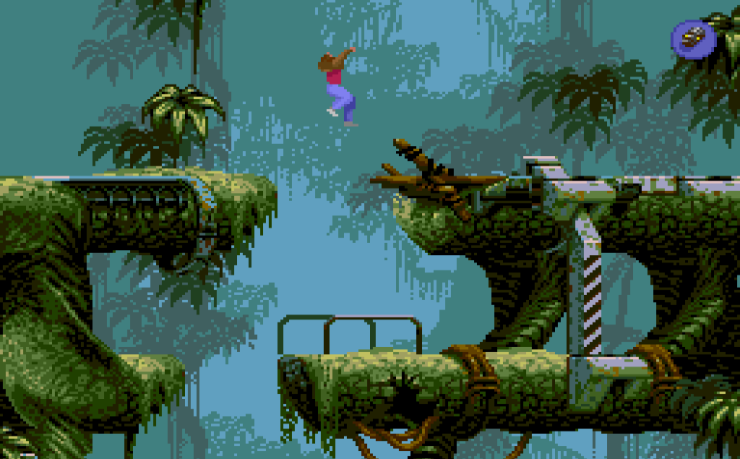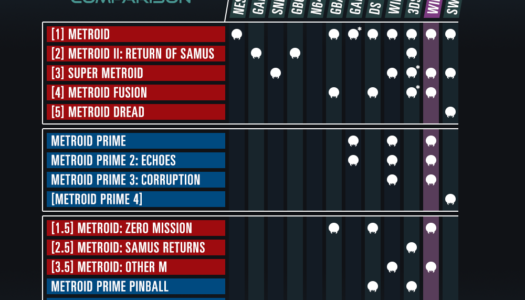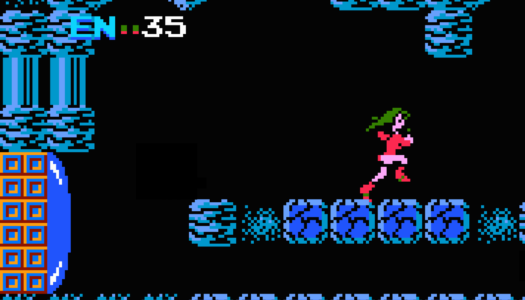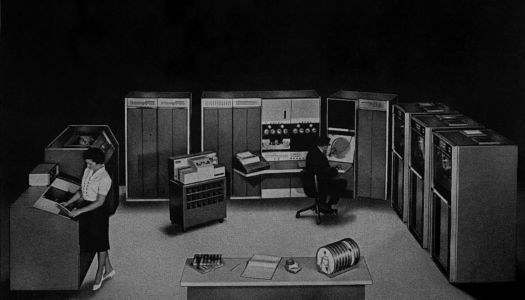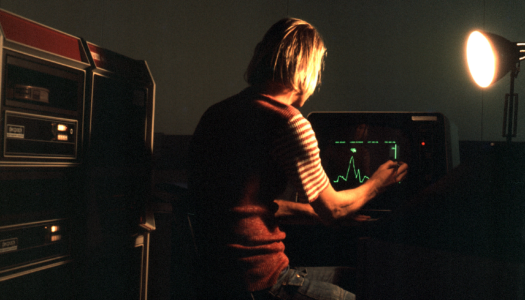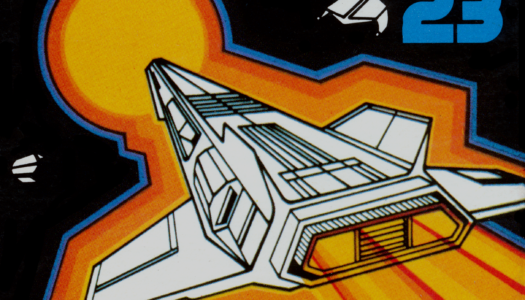Flashback Review
I have a confession to make: I’ve never played Flashback. It was a game that is remembered fondly by gamers, but that I unfortunately missed out on. Recently I was finally able to play through it, but does it hold up? I went into Flashback with an open mind.
Flashback is a cinematic action platformer influenced by the famous Another World in its use of rotoscoped animation and use of vector graphic cutscenes to tell a story. It uses realistic platforming mechanics, like running to build momentum for a long jump, and climbing up platforms instead of simply jumping to the next like other platformers of the time.
The game opens with a cinematic: a man escapes his captors on a hoverbike, only to be shot down over an alien jungle. He awakens in the jungle, unable to remember anything, until he finds a holocube that identifies him as Conrad B. Hart, agent of the Galaxia Bureau of Investigation. It’s a recording of himself, informing him that he should find his friend Ian to understand what’s going on. Upon finding Ian you learn that you had given him a backup of your memory.
After regaining your memories you learn that Conrad had uncovered a plot by shapeshifting aliens to set the stage for the eradication of humanity by replacing key members of government. Afraid of discovery by the aliens, Conrad made a backup of his own memory and gave it to Ian. Just as Conrad had feared, the aliens captured him and erased from his mind what he knew of them, all before he escaped on a hoverbike.

One of the most notable aspects of Flashback is its brilliant-looking rotoscoped sprite animations. The movements of Conrad and his enemies are animated realistically and fluidly. It’s all really fun to see in motion, and makes watching the action unfold all the more exciting.
To go with the brilliantly-animated sprites is equally well done level design. You’ll visit a variety of locations, from lush jungles to the Blade Runner-like city of New Washington, to a Night Club that houses a secret base for the Alien opposition. Each level has its own unique feel and charm to it, making for a refreshing experience on each of the games levels.
What ties the great rotoscoped animations and awesome level design together is fun gameplay. Combat requires you to be quick and responsive, and is fairly satisfying when you take down an enemy. Platforming, however, is a bit more slow paced and more realistic than other games of the time. Some jumps require you to sprint in order to build up the speed necessary to make a jump, and ascending ledges isn’t quite as easy as simply jumping — you have to position yourself below the ledge and climb. On top of jumping you can also perform rolls to evade your enemies, or get through narrow spaces. It makes combat a little more interesting, having to actively evade and dodge the attacks of certain enemies.
Flashback isn’t perfect though. I found some of the flaws to be pretty glaring, specifically scenarios of trial and error. While I did mostly enjoy the platforming, there was an annoying issue that came with the way you move through. You don’t have a camera following you as you would in say, Super Mario, or Metroid, but instead the area is segmented into different little areas the camera focuses on, and when you transition to the next area there is a very brief moment where the screen is black before bringing up the next area, not unlike moving through doors in Metroid. What’s unfortunate about this is if you’re like me and playing through for the first time, you can’t always anticipate what’s in the next area. You could run face first into an enemy, or plunge into a pit that kills you, which lead me to take up the habit of drawing my pistol and carefully walking to the next area. But sometimes you can’t be careful. There was a couple moments in the game where you’re racing against the clock, and you die because there’s a pit of death immediately at the start of the next screen, resulting in me dying numerous times and trying over until I got it right.
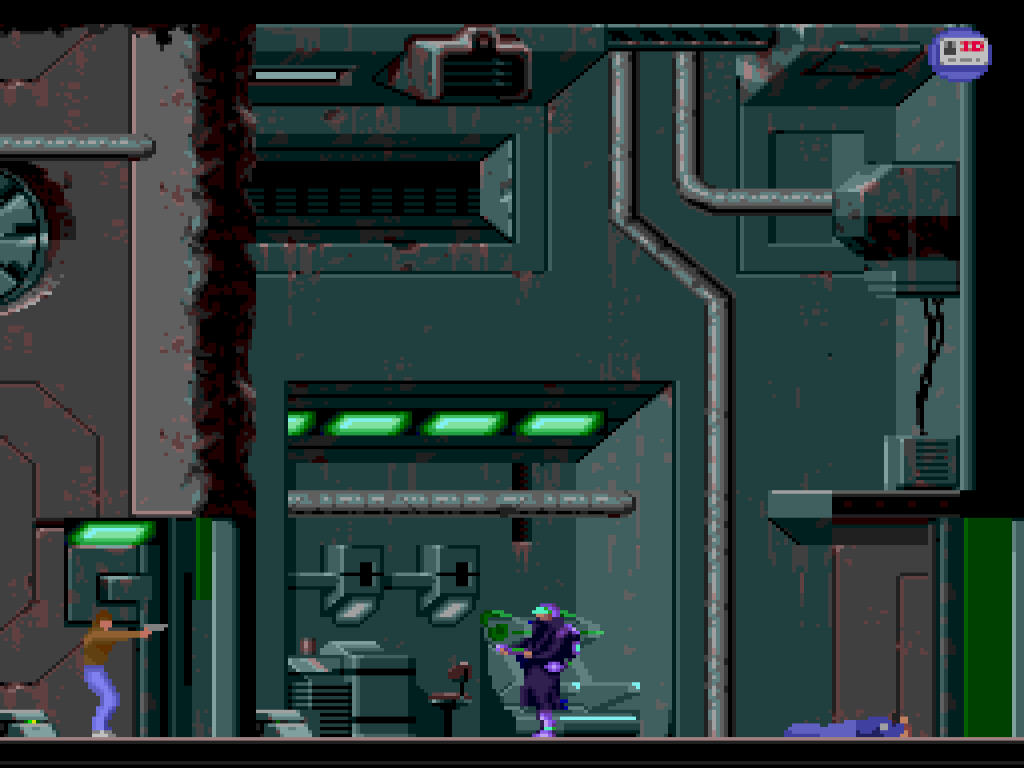
But the most stand-out example of this trial and error issue came from a moment later in the game. A door I had passed was locked, and the only way to unlock was to ascend an elevator in order to reach the switch that opens it. However, at the top of the elevator was a sensor, which when tripped activates a gun turret on a ledge just above me. So not wanting to walk headfirst into gunfire, I sent the elevator back down so it wouldn’t be tripping the sensor, figuring after I hit the switch I could call it back up. After hitting the switch to open the door I made my way back to the elevator and hit the switch to call it back up, but it wasn’t coming, I was trapped, the only way down resulting in Conrad’s death. After consulting a guide I learned I apparently had to leave my teleporter receiver down at the bottom so I could teleport back after my task was done, there is no way that I could have anticipated having to do this prior to using the elevator, I was forced to kill myself and go back.
Another glaring issue I had was thankfully one that’s few and far between, and that issue is enemy placement. Sometimes you can run into an enemy just as you transition over to the next area, so you get hurt before you’ve had a chance to do anything. But the more annoying enemy encounters are where they’re placed in small spaces, giving you very little room to evade, and very little margin for error. I’ve died or nearly died more times encountering a single enemy in a small space than I have multiple enemies in a large space.
A smaller issue I had, while the rotoscoped animations look cool, they can really slow things down at times. Conrad doesn’t really move pixel by pixel like other games, but instead step by step, kind of like a grid. So in order to climb a ledge you’ll usually have to slow down, walk and position yourself into the right position below a ledge, and then climb up and wait for the fancy animations to finish.
Flashback has left me with mixed feelings. I really enjoyed the good, but I was also really irritated by the bad. Even so, I’d still recommend giving it a try. It may not have aged well, but it’s still a classic.

